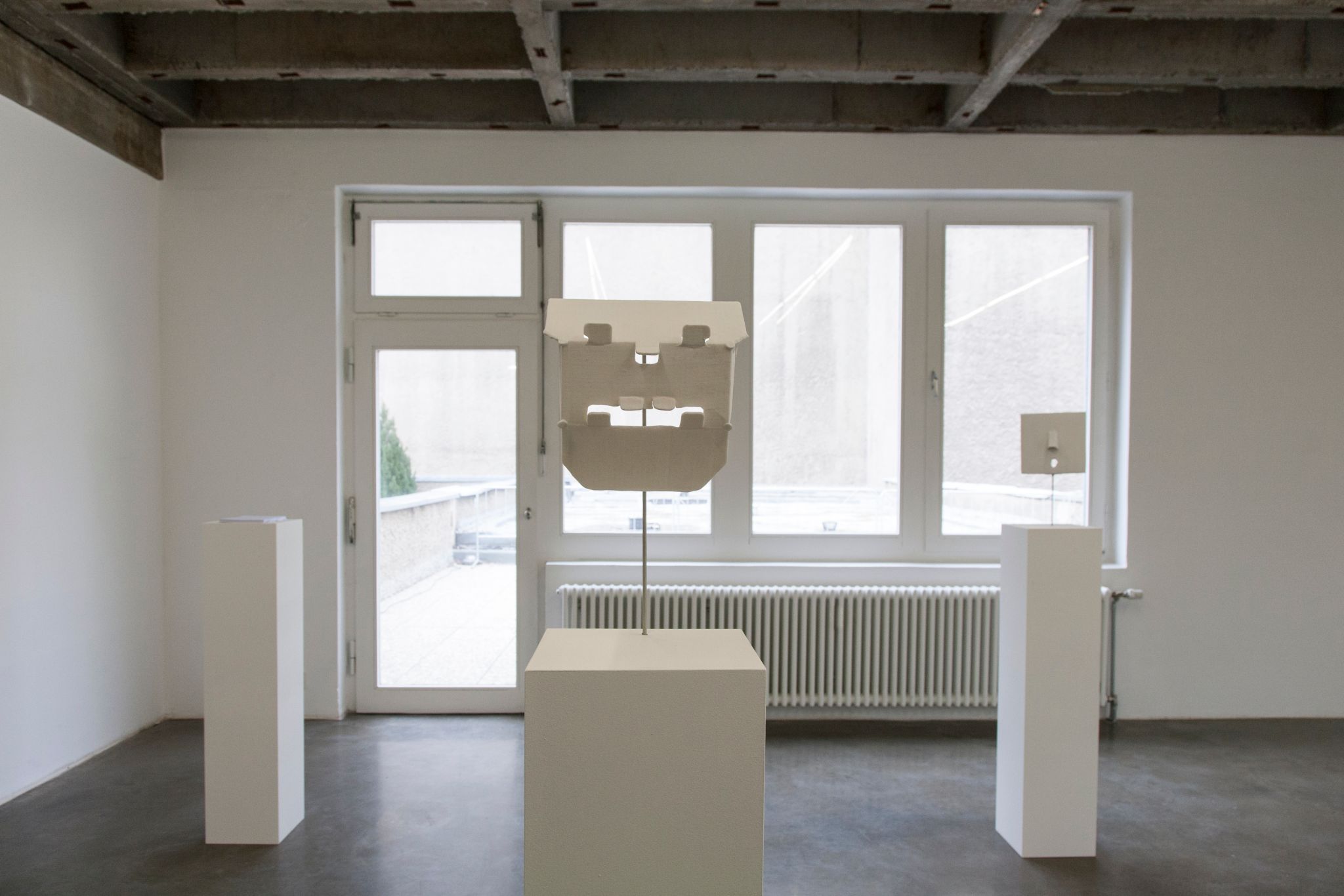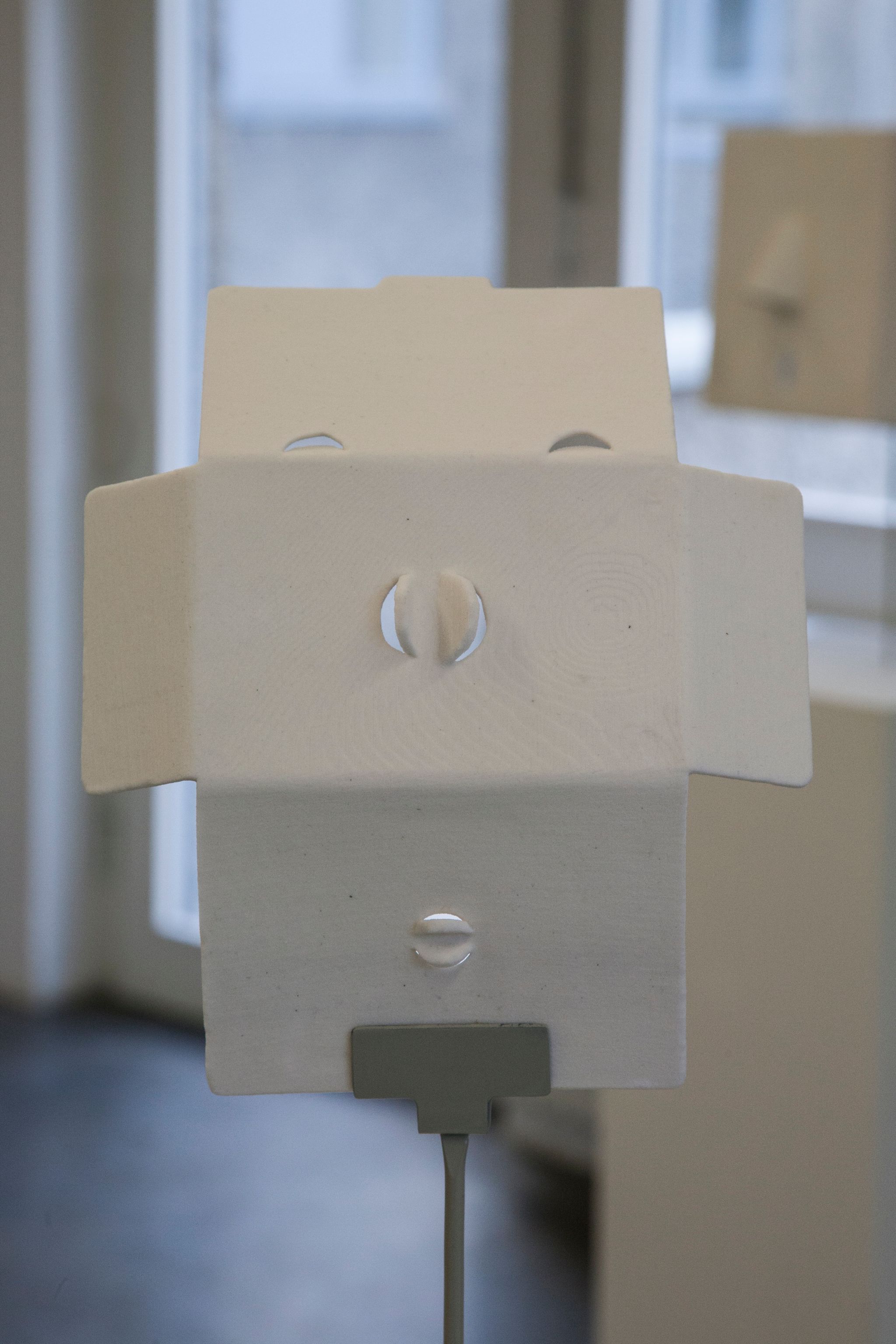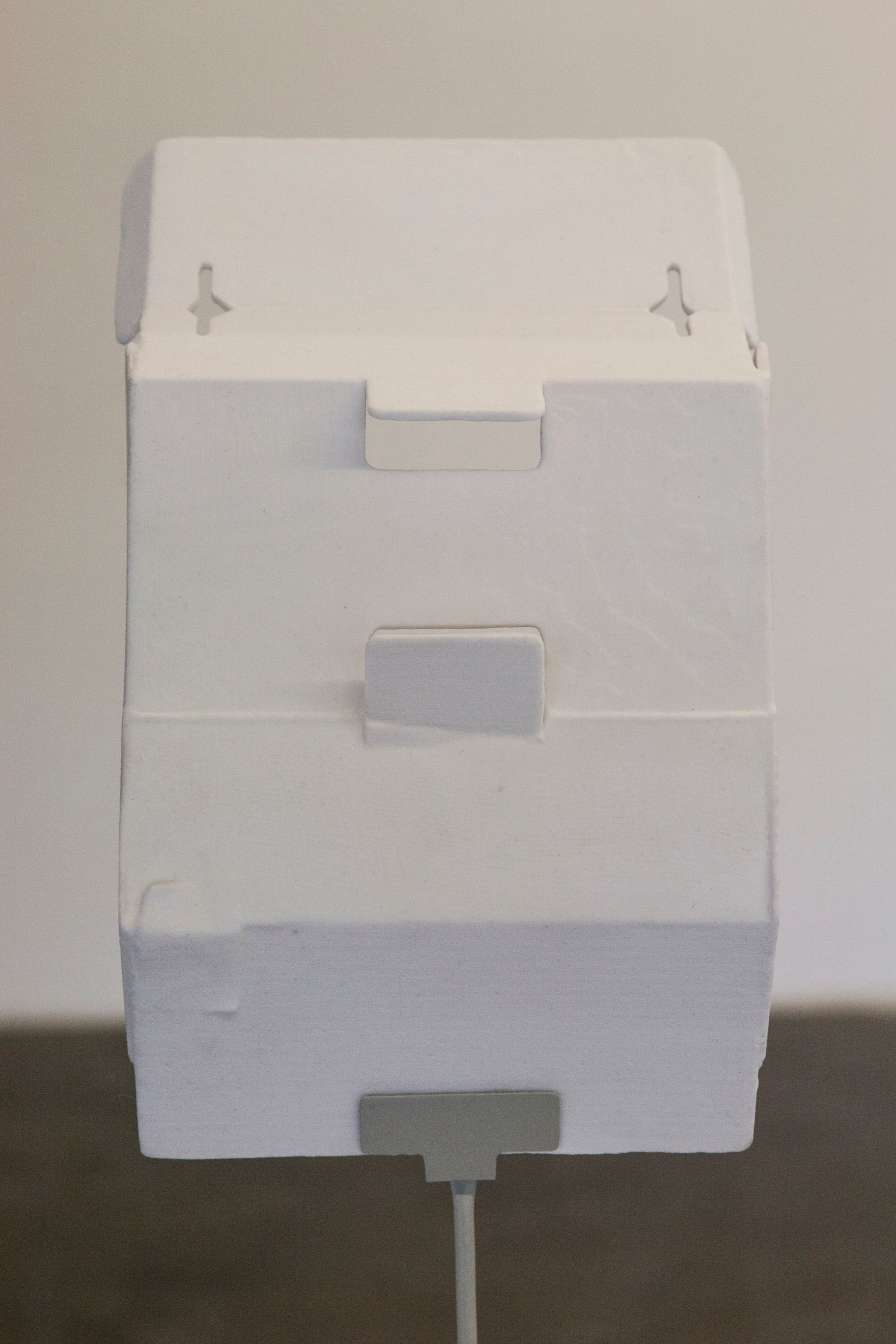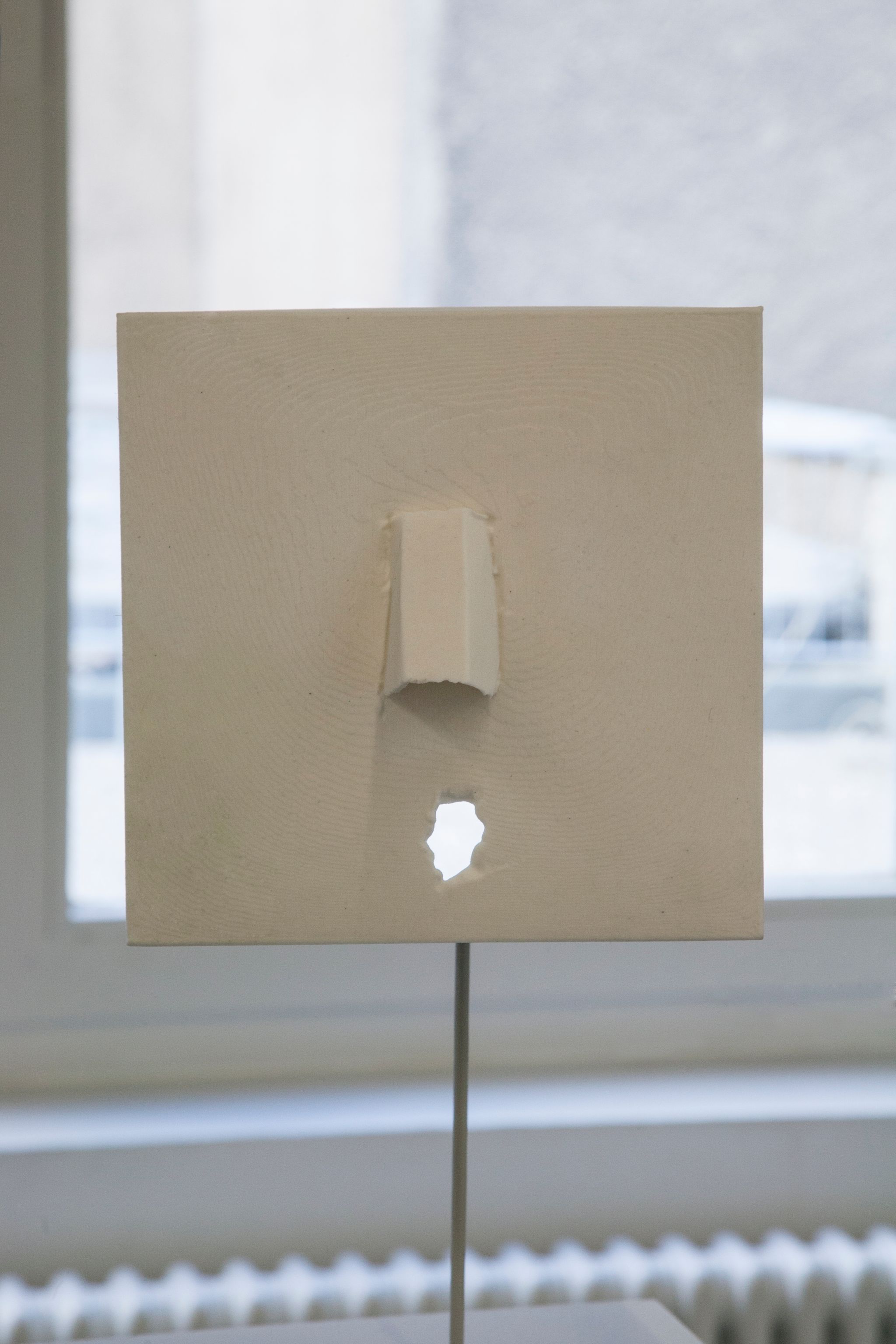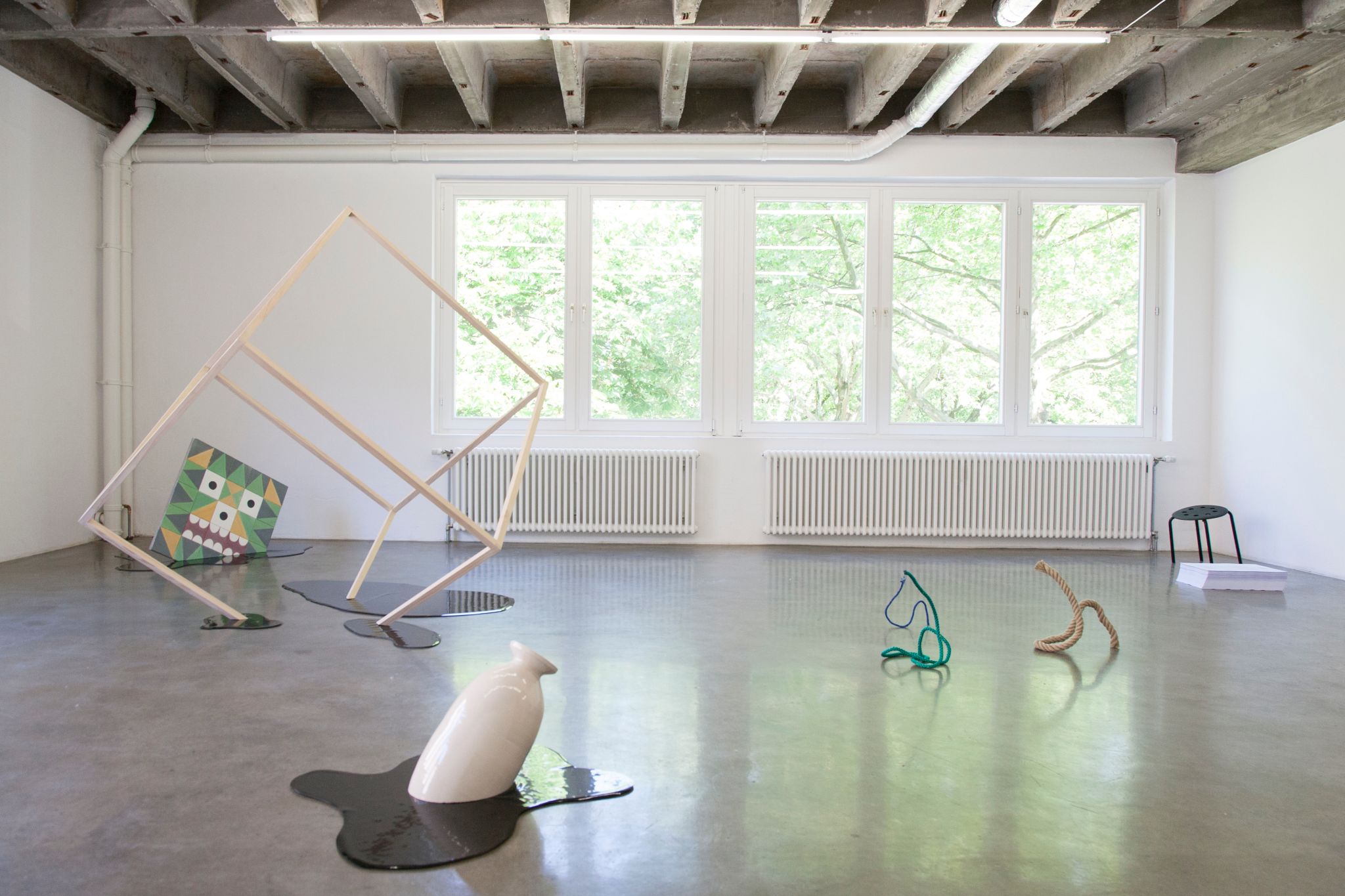From performance, pop poetics, and discursive direction to short films, music videos, site-specific installations, and sculptures (spanning 3D prints, found objects, and ceramics), Judith Hopf maintains a practice of growing diversity. Paired with a tongue- in-cheek attitude and slowed working process—deliberately setting her own minimum quota for creative output to a single film and a series of objects per year—her array of work presents a playful resistance to categorization and requirements of artistic production. Often propelled by her immediate environment, Hopf has repeatedly collaborated with other artists and worked with many non-profit institutions in Berlin. Taking its cue from Hopf’s defiance of conventions and fast turn-overs as well as thriving on her catalogue of collaborations—ongoing and new—Hopf’s Cycle at PRAXES falls in four uneven measures.
read more
Emphasizing deceleration to the point of deadpan stillness, the first exhibition centers on a flock of concrete sheep from 2013. Confronting the spectator with a direct, apathetic gaze and squeezing the crowd to the walls, the heavy herd rules the grey premises, grazing unimpressed on the (institutional) modernist layout. Cast from standardized moving boxes, any expected activity is stagnated, solidified, and eternalized, as the animals square off in a partly precarious, partly hilarious balance on their thin, fragile legs. As such, they bear little resemblance to real sheep, only subtly marked by coal drawn faces. Yet as anyone who has desperately counted sheep to fall asleep knows, it is less important how sheepish the sheep actually appear. What matters is their repeated jump across the fence from wakeful consciousness to blissful sleep—that which the insomniac tracks, insistently, stupidly counting away.
As a second element in the space, a high noon is rising. Four silkscreen prints, part of Hopf’s series Sun Up / Sun Down from 2013, cycle through a looped sequence of gradually adjusted transformations indicating time passing, or rather a visualized perception of daily repetition and change. Distinct borders melt into a kind of camouflage where small hand-made differences in shadows, layers, and echoes begin to stand out from the seemingly “industrial” patterns—emphasizing the hour of confrontation and crisis—but you might have to squint a little and approach it sideways to actually see it.
31 January–23 March, Untitled (1)
28 March–6 April, Untitled (2)
11 April–11 May, Untitled (3)
16 May–14 June, Untitled (4)
Text: PRAXES Center for Contemporary Art
Photos: Eva Lechner/PRAXES Center for Contemporary Art







